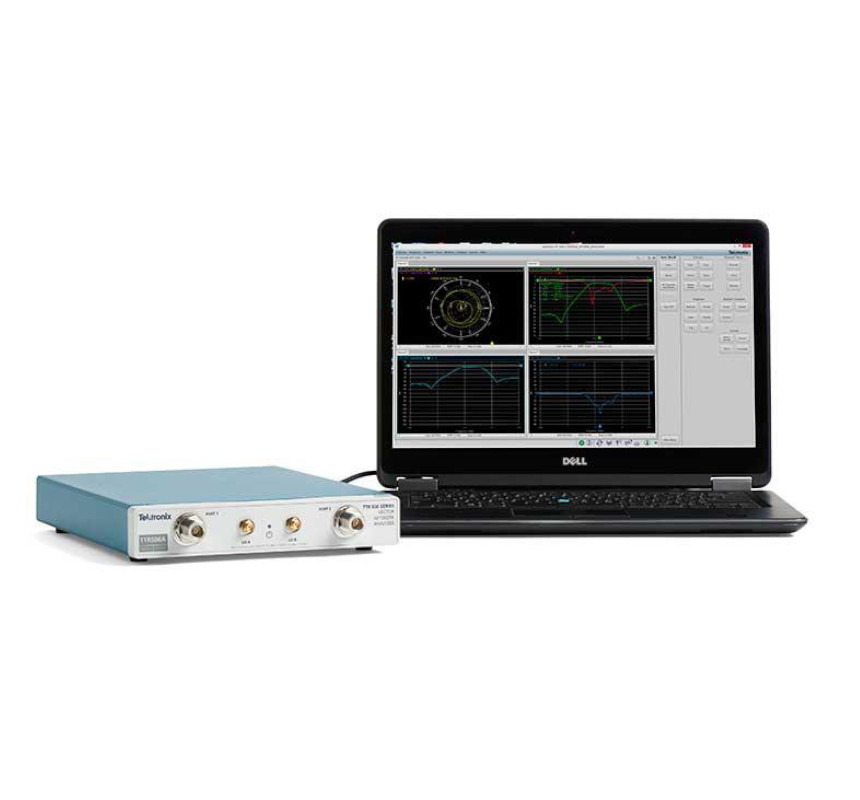Vector Network Analyzer advantages

A VNA allows you to measure complex quantities such as reflection coefficients, impedance, admittance, return loss, insertion loss, gain, isolation, and much more in a manner that is not possible with other test instruments.
Traditional test equipment such as power meters, spectrum analyzer, and oscilloscopes typically only have receivers that are used to measure signals emitted or created by the Device Under Test (DUT). In contrast, a VNA has both a source and a set of receivers used to determine changes to the stimulus caused by the DUT. The stimulus-based test approach allows VNAs to measure very small reflections and changes to the stimulus enabling you to accurately characterize any RF component in real-world environment and test conditions.
Who uses Vector Network Analyzers?

RF design and validation engineers use VNAs to validate their design simulations.
Manufacturing engineers assemble and test RF components and devices based on a certain set of specifications. Vector Network Analyzers are used to quickly and accurately validate the performance of the RF components and devices.
Education professionals train the next generation of engineers with standard industry test instrumentation.
VNA application examples:
- Antenna matching and tuning
- Filter measurements
- Amplifier measurements
- Radio Frequency (RF) cable and connector measurements
- 75 Ohm characteristic impedances
- Automated production testing
Smart innovations, reduced cost and size

The TTR500 Series VNA tightly integrates six RF receivers and two RF sources into a proprietary ASIC. With its innovative architecture and patented technology, the TTR500 Series VNA achieves the same level of performance as a benchtop VNA, but at 40 percent lower cost and one-seventh the size and weight of units with comparable performance.
Highlights
- Frequency Range: 100 kHz up to 6 GHz
- Dynamic Range: Greater than 110 dB
- Trace Noise: Less than 0.012 dBrms
- Output Power: -50 to +7 dBm
- Built-in bias tee accessible on both ports to bias active devices
Learning curve? There is none

It’s simple. Our industry-standard interface allows you to spend less time getting up to speed, so you’ll have more time to test your design. The VectorVu-PC software delivers a traditional look and feel for controlling and calibrating the instrument with any Windows PC or laptop. For automated test systems, programmatic support is offered for common legacy VNAs for easy integration into existing test systems.
| Model | Frequency Range | Ports | Dynamic Range | List Price |
|---|---|---|---|---|
| TTR503A | 100 KHz – 3 GHz | Two ports, type-N female connectors | >122 dB | |
| TTR506A | 100 KHz – 6 GHz | Two ports, type-N female connectors | >122 dB |
| Tektronix TTR500 | Keysight ENA E5063 | Anritsu Shockline MS46122B | Rohde & Schwarz ZVL6 | |
|---|---|---|---|---|
| Frequency Range | 100 kHz – 3.0 GHz | 100 kHz – 3.0 GHz | 1 MHz – 8.0 GHz | 9 kHz – 6.0 GHz |
| 100 kHz – 6.0 GHz | 100 kHz – 6.5 GHz | |||
| Dynamic Range (dB) | >122 | 117 | 100 | > 115 |
| Trace Noise (dBrms) | < 0.008 | 0.005 | 0.006 | < 0.005 |
| Output Power | -50 to +7 dBm | -20 to 0 dBm | -20 to -3 dBm | -50 to 0 dBm |
| Bias Tee (internal) | Yes | No | No | No |
| Weight (lbs.) | 3.5 | 24 | 4.8 | 15.4 |
Antenna Matching and Tuning

You built your antenna and transceiver. Now you want to see how well it performs. Minimize costly signal reflections and maximize signal range by testing for impedance mismatches or discontinuities in your system using the TTR500 VNA. Thanks to its USB design and easy to use interface, the TTR500 makes analyzing impedances or admittances on the Smith chart and saving S-parameter files, for the purpose of designing matching networks, seamless and convenient.
Highlights
- Measure S-parameters in Log Magnitude, Phase, SWR, impedance, and admittance formats
- Smith chart markers in impedance, admittance, phase, real, and imaginary
- Conveniently import/export S-parameter files in Touchstone (.sNp) file format directly to your PC
- Save traces to memory for comparison with live results
VectorVu-PC software brings benchtop features to the TTR500 series VNA.
The TTR500 series operates with VectorVu-PC, a powerful program that is the basis of Tektronix vector network analyzers. The software controls the vector network analyzers acquisition and updates measurement displays continuously, at the direction of the user.
VectorVu-PC (available as a free download) features an industry-standard interface that minimizes the learning curve so you have more time to test your device under test.
Highlights
- Traditional VNA look-and-feel and features for controlling and calibrating the instrument, all conveniently from the user’s Windows PC or tablet.
- Optimized for touchscreen
- Programmable in C/C++/C#, Python, MATLAB, LabView, and more via a SCPI programming interface, compatible with common legacy VNAs.
- LabView driver available
Complete line of affordably priced accessories

Tektronix offers a variety of robust accessories to simplify your shopping for the complete VNA solution. Accessories available include a rugged carrying case, rack mount kits, rugged phased-stable cables, attenuators, adapters and calibration kits.
Highlights
- Wide variety of calibration kits for mechanical and automated electronic calibration
- Rugged, phase stable cables in a variety of sizes and types
- Adapters, coaxial, 50 Ohm with a variety of connector sizes and types














































Reviews
There are no reviews yet.